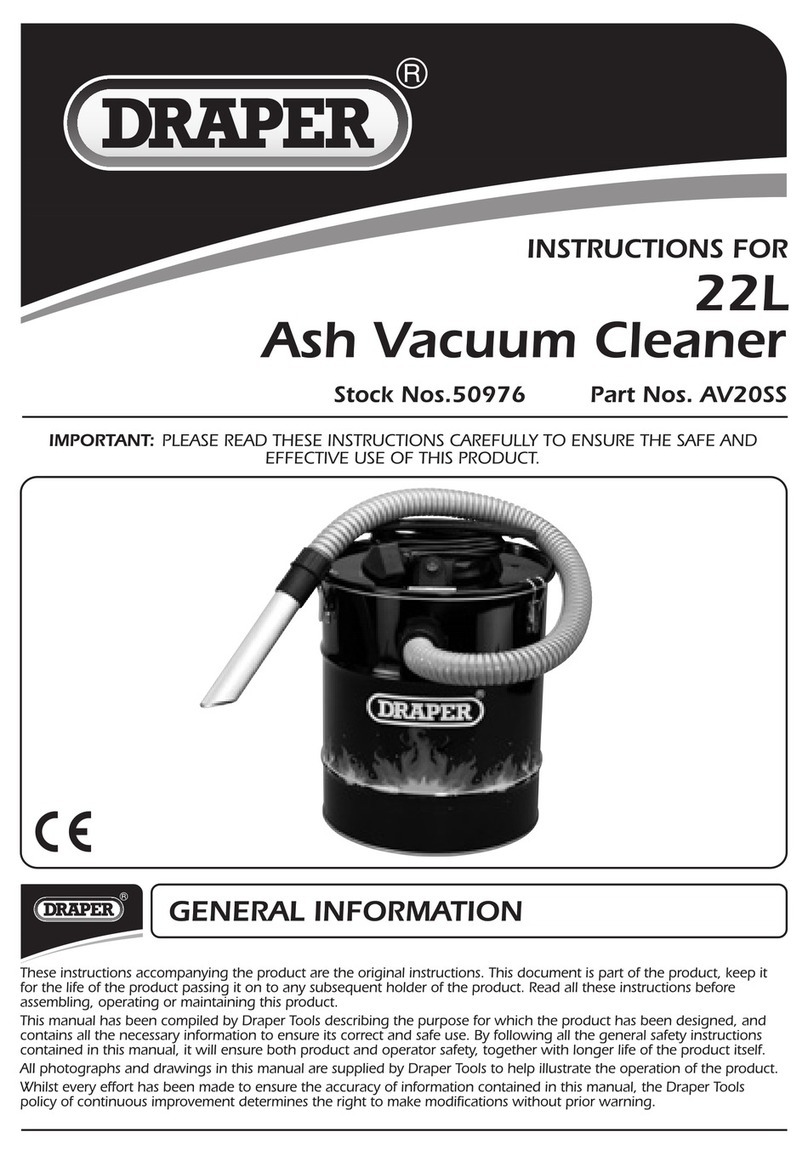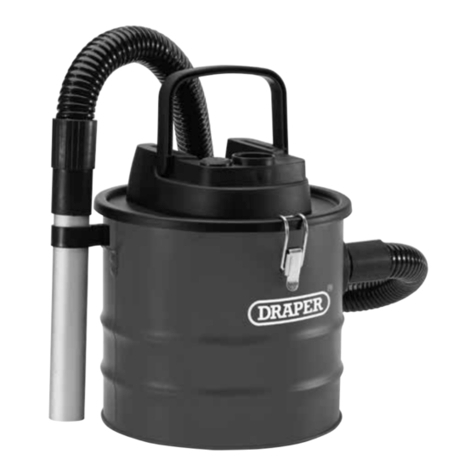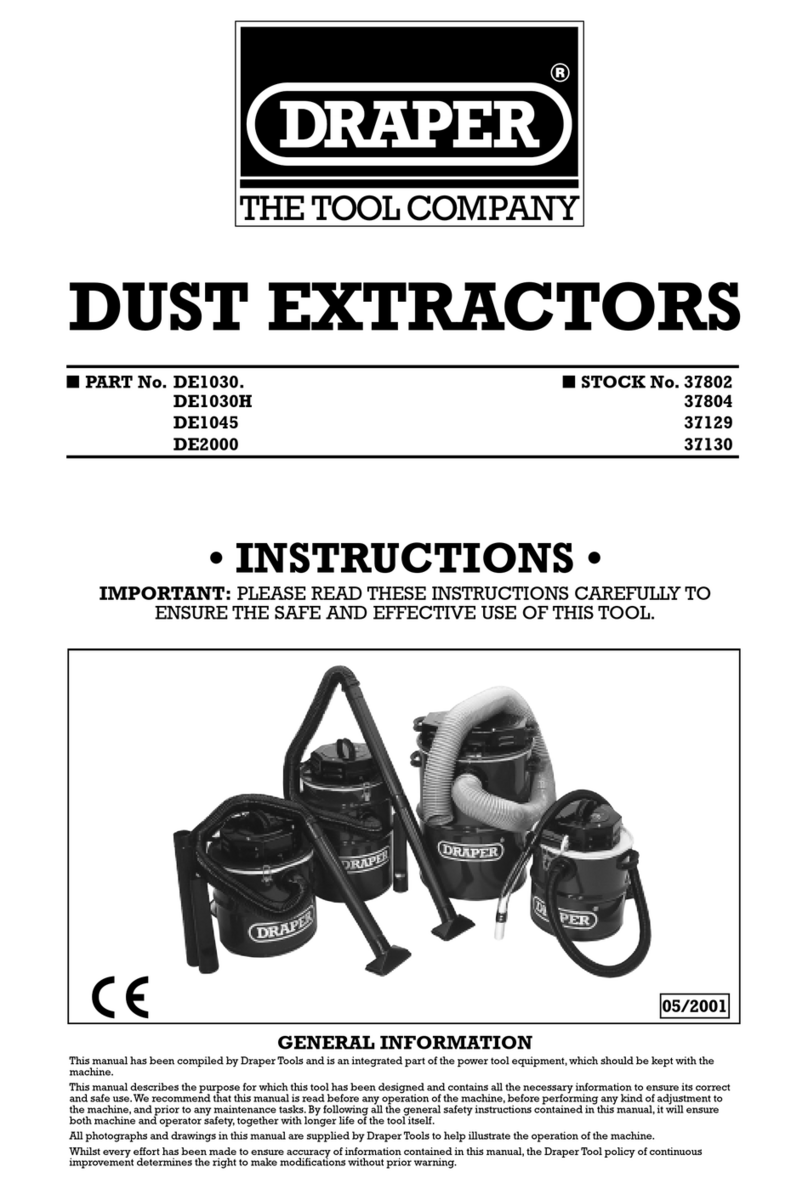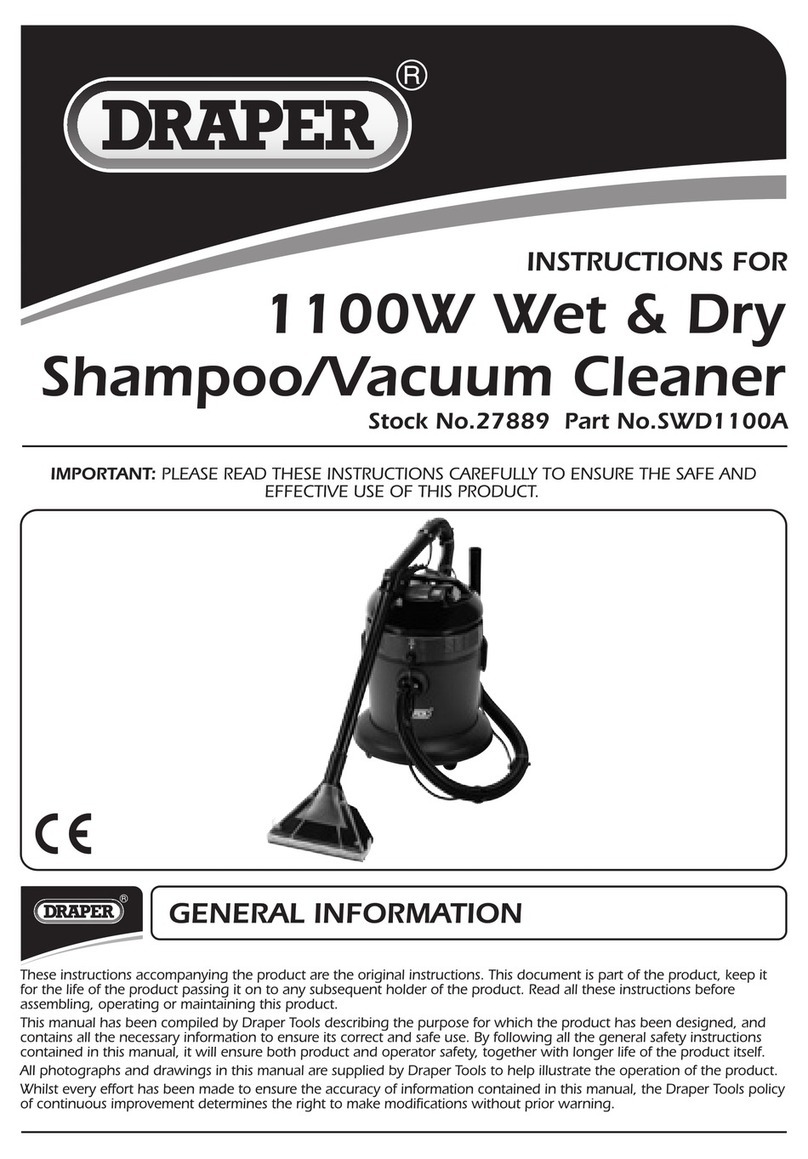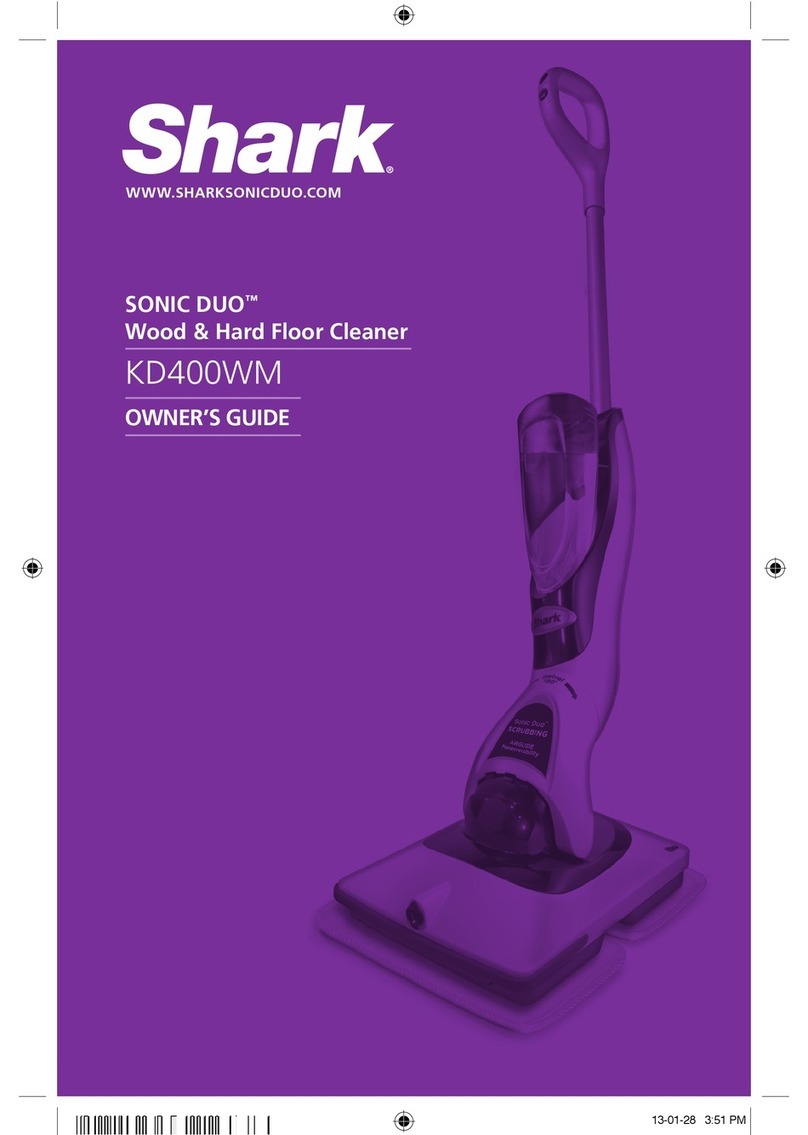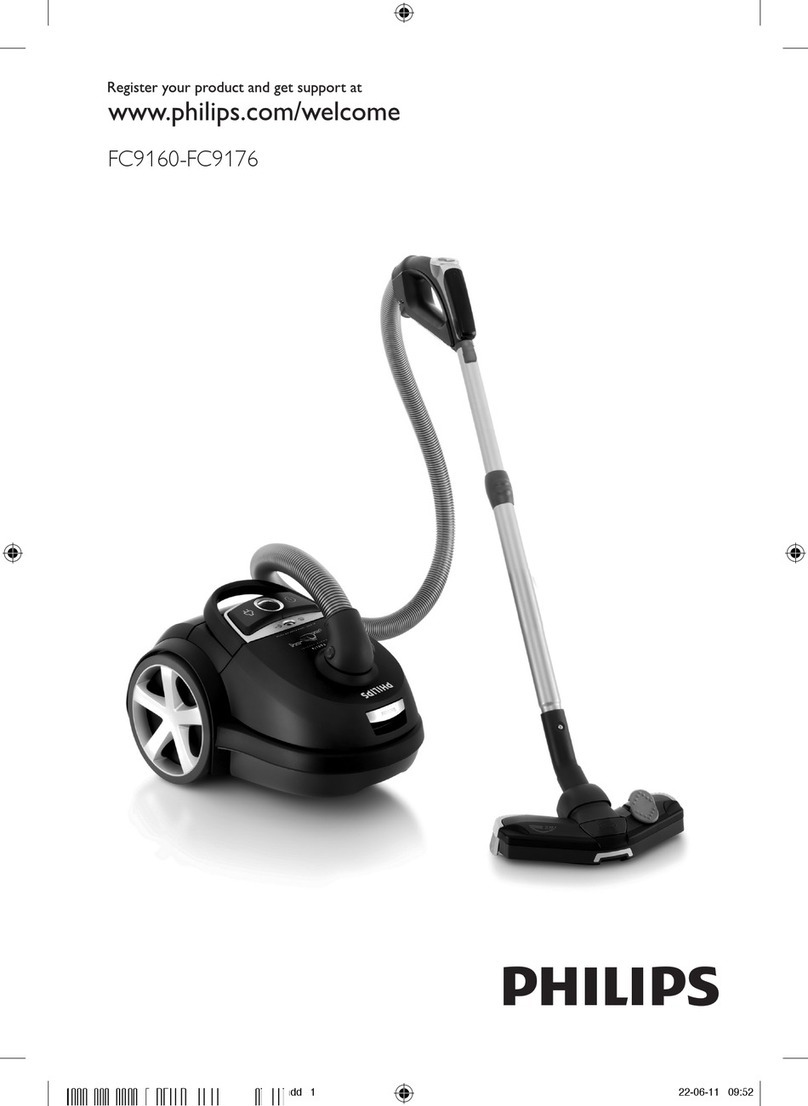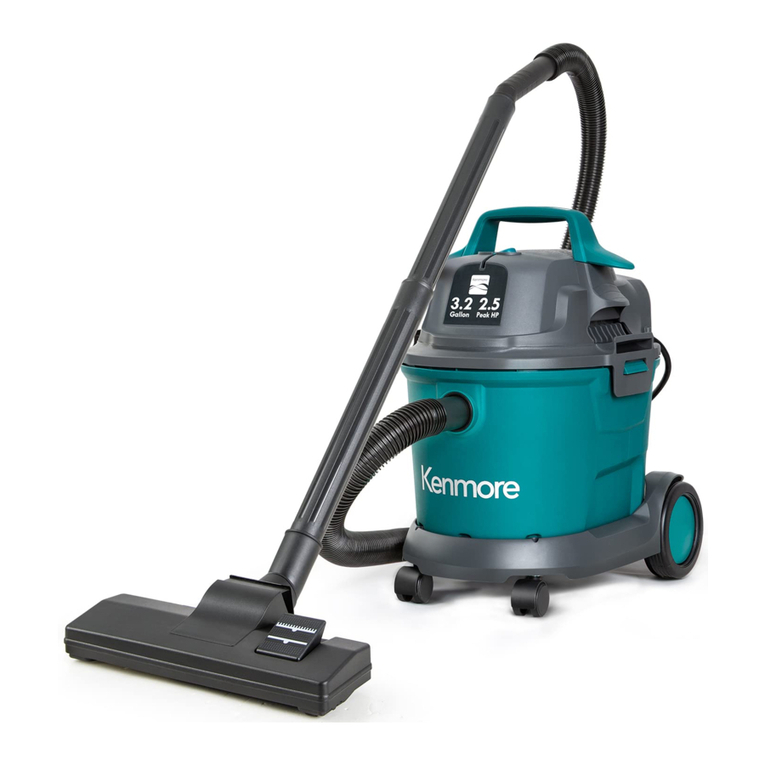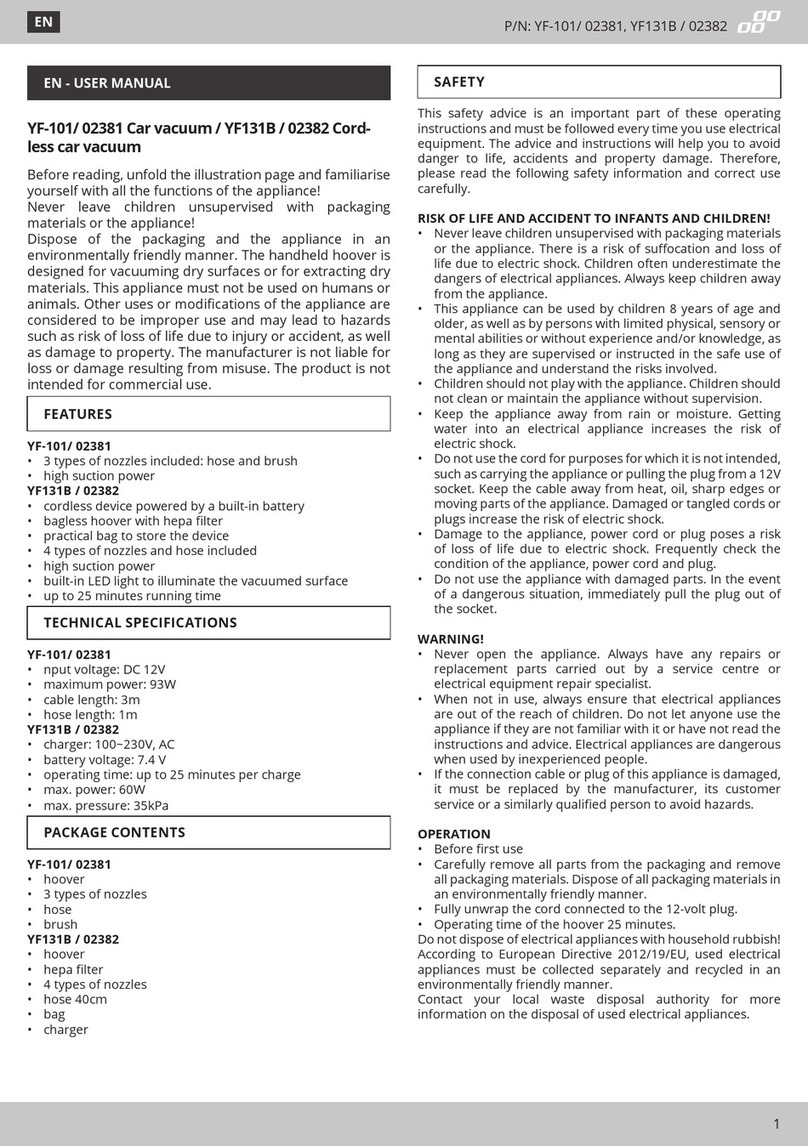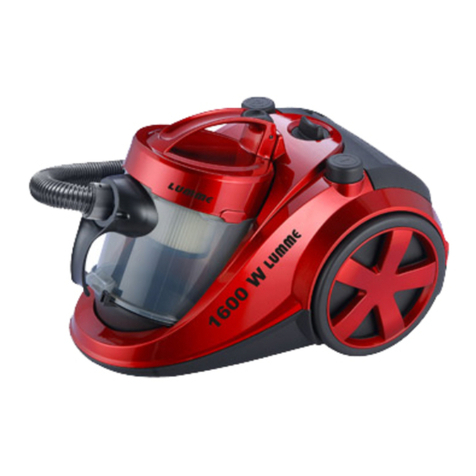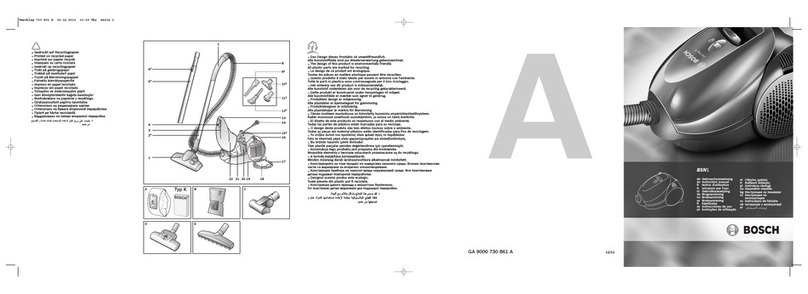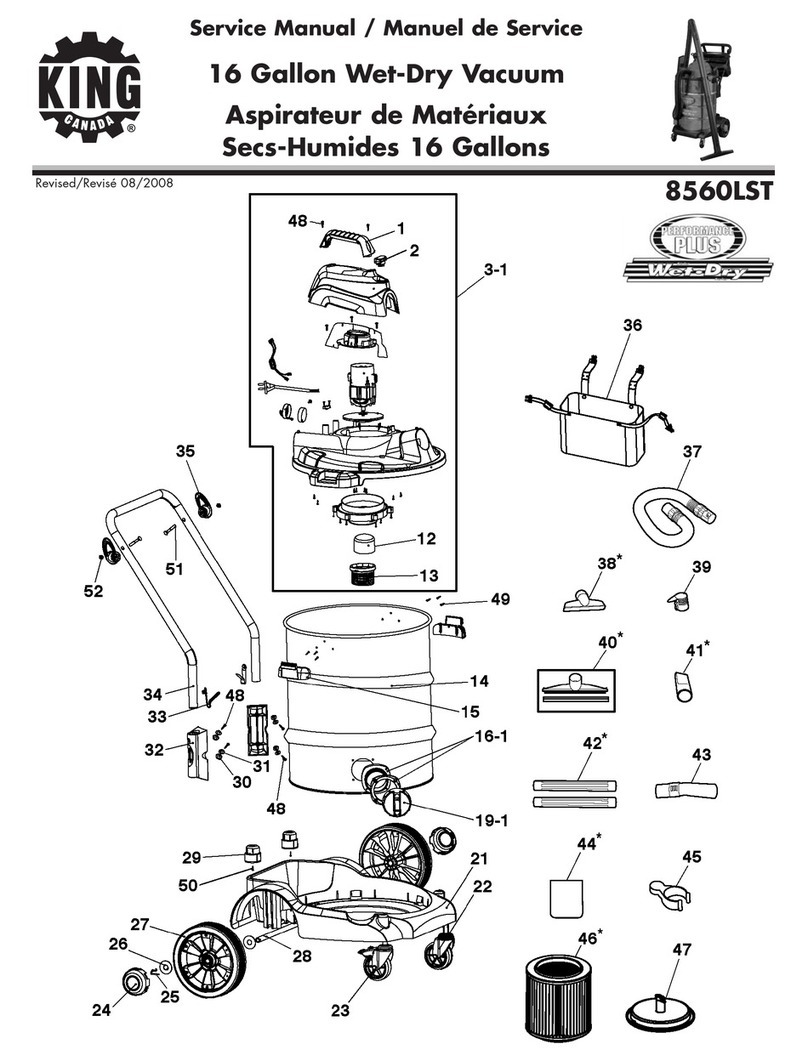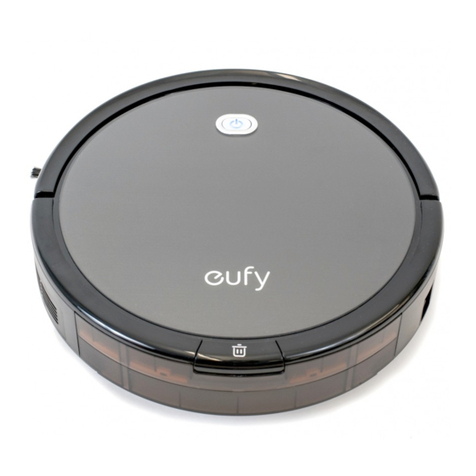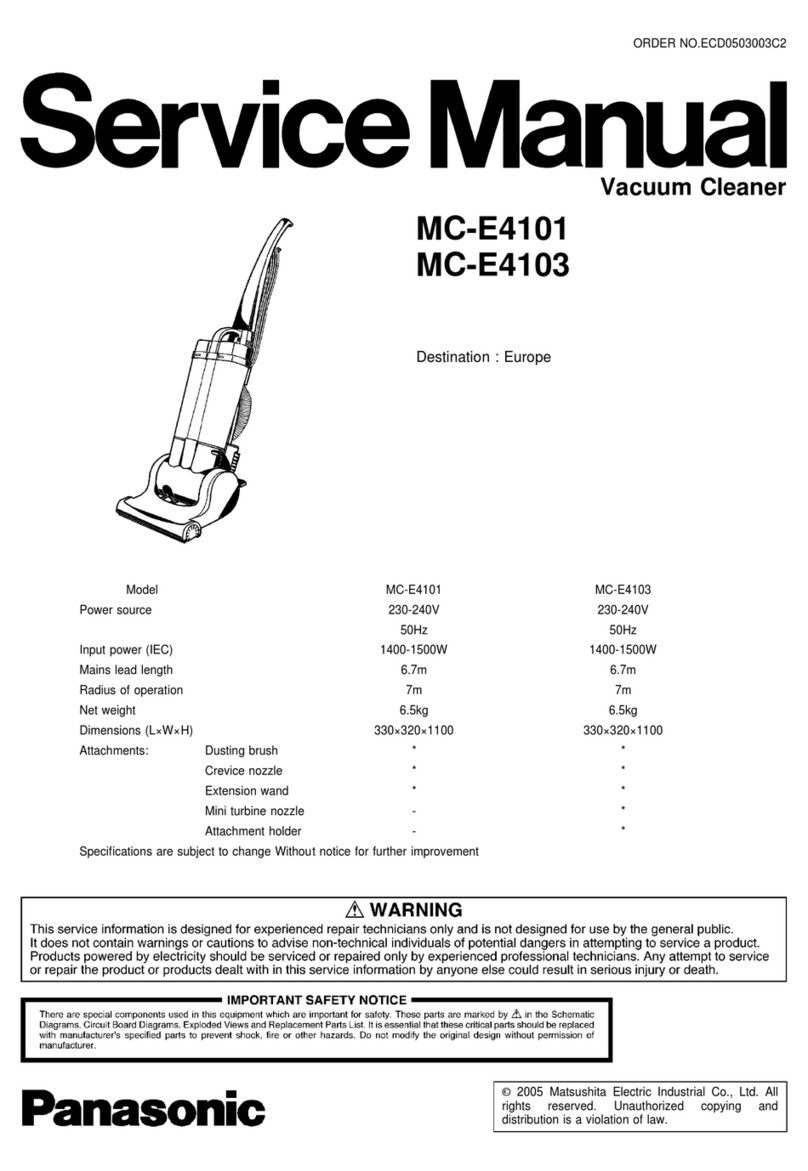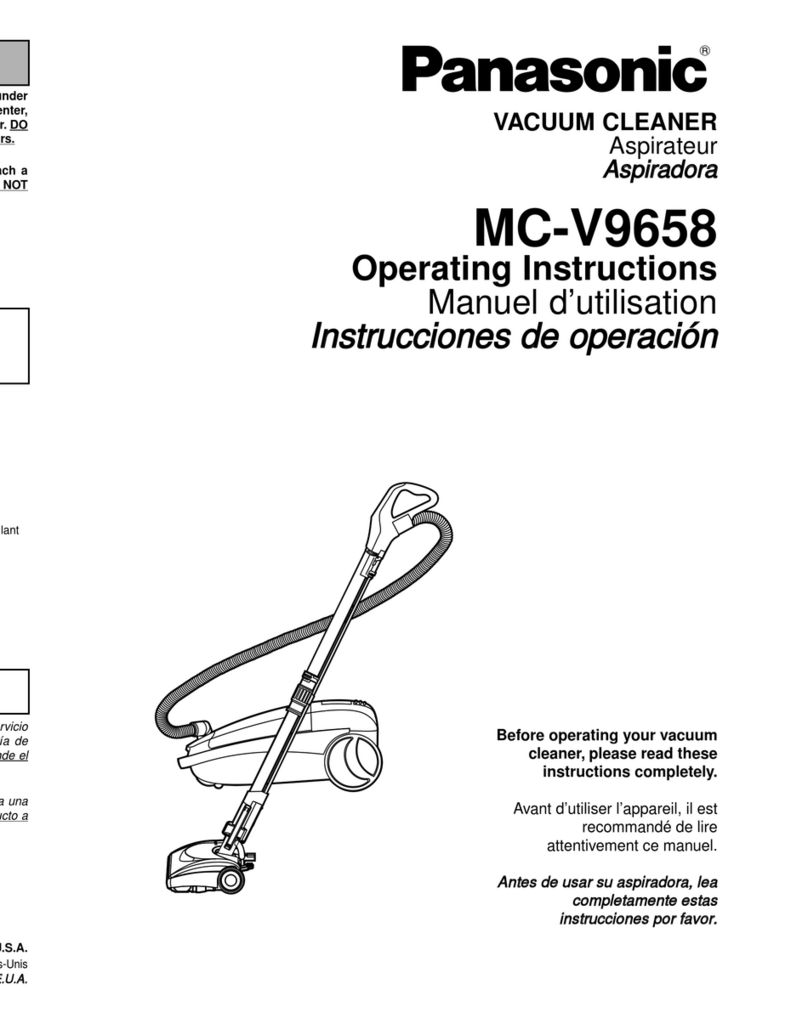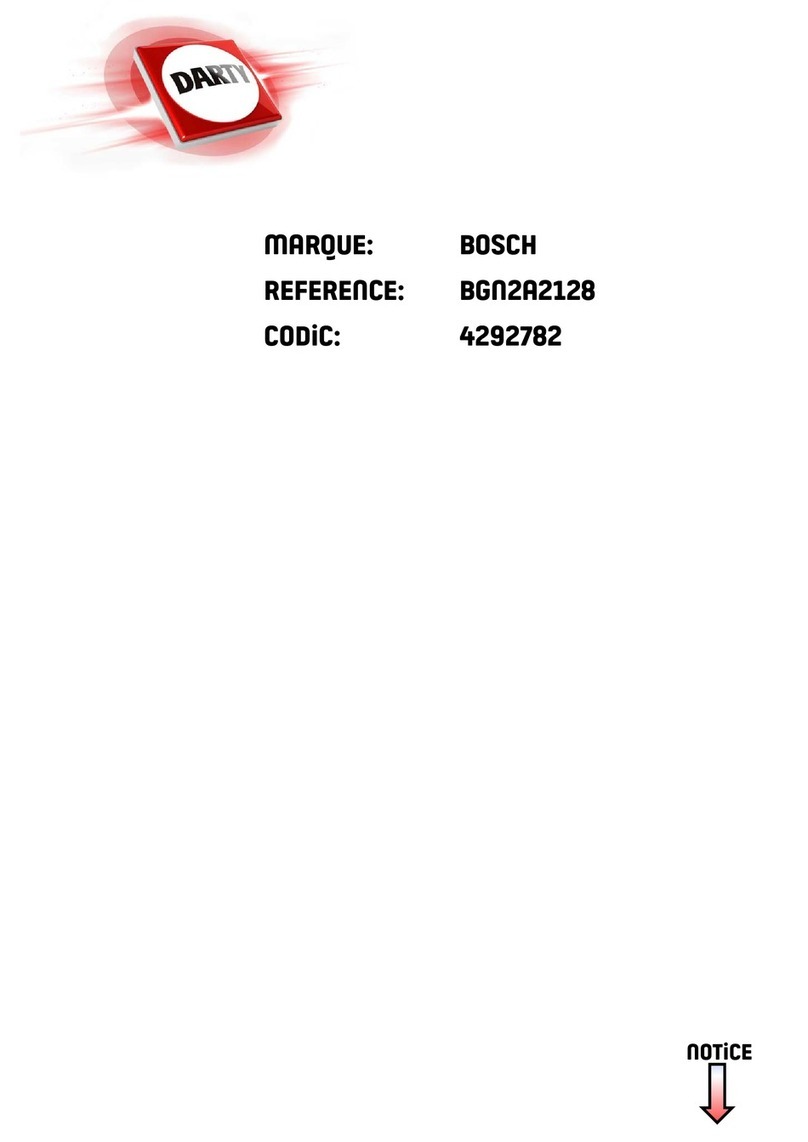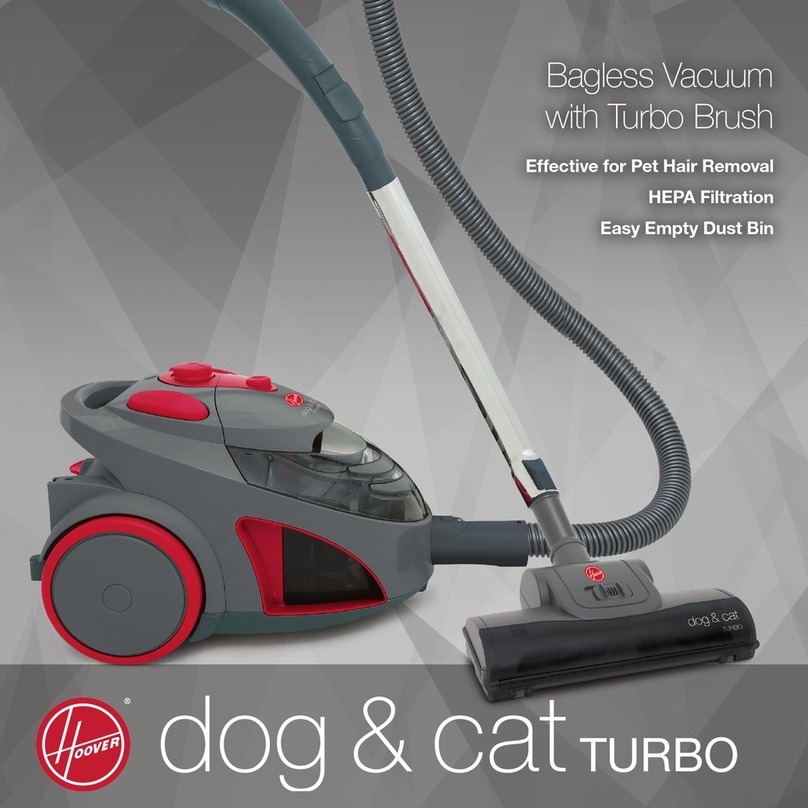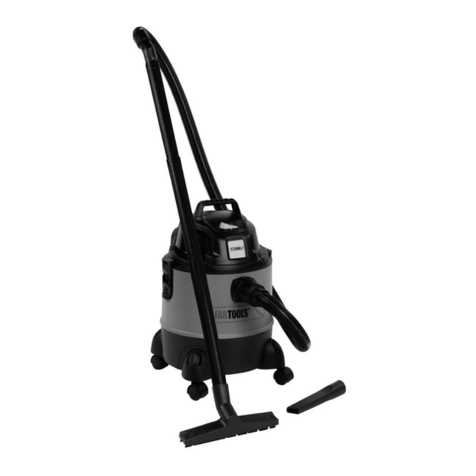Draper SWD1500 User manual

3-IN-1 WET & DRY
VACUUM CLEANER
WITH SHAMPOO VALETING
75442
These instructions accompanying the product are the original instructions. This document is part of the product,
keep it for the life of the product passing it on to any subsequent holder of the product. Read all these instructions
before assembling, operating or maintaining this product.
This manual has been compiled by Draper Tools describing the purpose for which the product has been designed,
and contains all the necessary information to ensure its correct and safe use. By following all the general safety
instructions contained in this manual, it will ensure both product and operator safety, together with longer life of the
product itself.
All photographs and drawings in this manual are supplied by Draper Tools to help illustrate the operation of the
product.
Whilst every effort has been made to ensure the accuracy of information contained in this manual, the Draper
Tools policy of continuous improvement determines the right to make modifications without prior warning.
ORIGINAL LANGUAGE

1. INTRODUCTION
1.1 SCOPE
This machine is designed to pick up both wet and dry
material with the added facility of shampooing.
Part of our core range, this product is suitable for
enthusiasts and trades persons alike. Any application
other than that it was intended for, is considered misuse.
This product is not a toy and must not be used by
children or any person with reduced physical, sensory or
mental capabilities or lack of experience and knowledge,
or people unfamiliar with these instructions.
Local regulations may restrict the age of the operator.
1.2 UNDERSTANDING THIS MANUALS
SAFETY CONTENT:
Warning! – Information that draws attention to the
risk of injury or death.
Caution! – Information that draws attention to the risk of
damage to the product or surroundings.
1.3 EXPLANATION OF SYMBOLS
Before plugging in your tool, make sure the socket
voltage matches that on the product plate. If the socket
voltage does not match that shown on the type plate, it
can result in a serious hazard and damage to your tool.
Important: Read instruction manuals
before operating and servicing this
equipment.
For indoor use.
Do not expose to rain.
Tank capacity
Motor capacity (Watts).
Rated voltage
Machine weight.
Hose diameter.
Fully approved power cable
WEEE –
Waste Electrical & Electronic Equipment.
Do not dispose of Waste Electrical & Electronic
Equipment in with domestic rubbish.
Class II construction
(Double insulated).
UK Conformity Assessed.
European conformity.
2. SPECIFICATION
2.1 SPECIFICATION
Stock no ................................................................. 75442
Part no..............................................................SWD1500
Motor:
Rated voltage ............................................ 230V~
Rated frequency ...........................................50Hz
Rated input ................................................1500W
Insulation class............ Class II (double insulated)
Maximum vacuum pressure .................18Kpa (180mbar)
Maximum air flow ............................................... 32L/sec
Tank capacity - liquid ................................................. 20L
Fluid capacity ............................................................ 13L
Shampoo tank volume ................................................ 4L
Sound pressure level...........................................75dB(A)
Dimensions (D × W × H) ..... 400mm × 450mm × 560mm
Machine weight (net)............................................. 12.5kg
3. HEALTH AND SAFETY
INFORMATION
3.1 GENERAL SAFETY
INSTRUCTIONS FOR POWER TOOL
USE
Warning! Read all safety warnings, instructions,
illustrations and specifications provided with this
power tool. Failure to follow all instructions listed below
may result in electric shock, fire and/or serious injury.
Save all warnings and instructions for future
reference.
The term “power tools” in the warnings refers to your
mains-operated (corded) power tool or battery-operated
(cordless) power tool.
1) Work area safety
a) Keep work area clean and well lit. Cluttered or
dark areas invite accidents.
b) Do not operate power tools in explosive
–
2
–

–
3
–
atmospheres, such as in the presence of
flammable liquids, gases or dust. Power tools
create sparks which may ignite the dust or fumes.
c) Keep children and bystanders away while
operating a power tool. Distractions can cause
you to lose control.
2) Electrical safety
a) Power tool plugs must match the outlet. Never
modify the plug in any way. Do not use any
adapter plugs with earthed (grounded) power
tools. Unmodified plugs and matching outlets will
reduce risk of electric shock.
b) Avoid body contact with earthed or grounded
surfaces, such as pipes, radiators, ranges and
refrigerators. There is an increased risk of
electric shock if your body is earthed or
grounded.
c) Do not expose power tools to rain or wet
conditions. Water entering a power tool will
increase the risk of electric shock.
d) Do not abuse the cord. Never use the cord for
carrying, pulling or unplugging the power
tool. Keep cord away from heat, oil, sharp
edges or moving parts. Damaged or entangled
cords increase the risk of electric shock.
e) When operating a power tool outdoors, use an
extension cord suitable for outdoor use. Use
of a cord suitable for outdoor use reduces the risk
of electric shock.
f) If operating a power tool in a damp location is
unavoidable, use a residual current device
(RCD) protected supply. Use of an RCD
reduces the risk of electric shock.
3) Personal safety
a) Stay alert, watch what you are doing and use
common sense when operating a power tool.
Do not use a power tool while you are tired or
under the influence of drugs, alcohol or
medication. A moment of inattention while
operating power tools may result in serious
personal injury.
b) Use personal protective equipment Always
wear eye protection. Protective equipment such
as a dust mask, non-skid safety shoes, hard hat
or hearing protection use for appropriate
conditions will reduce personal injuries.
c) Prevent unintentional starting. Ensure the
switch is in the off-position before connecting
to power source and/or battery pack, picking
up or carrying the tool. Carrying power tools
with your finger on the switch or energising power
tools that have the switch on invites accidents.
d) Remove any adjusting key or wrench before
turning the power tool on. A wrench or a key
left attached to a rotating part of the power tool
may result in personal injury.
e) Do not overreach. Keep proper footing and
balance at all times. This enables better control
of the power tool in unexpected situations.
f) Dress properly. Do not wear loose clothing or
jewellery. Keep your hair and clothing away
from moving parts. Loose clothes, jewellery or
long hair can be caught in moving parts.
g) If devices are provided for the connection of
dust extraction and collection facilities,
ensure these are connected and properly
used. Use of dust collection can reduce
dust-related hazards.
h) Do not let familiarity gained from frequent use
of tools allow you to become complacent and
ignore tool safety principles. A careless action
can cause severe injury within a fraction of a
second.
4) Power tool use and care
a) Do not force the power tool. Use the correct
power tool for your application. The correct
power tool will do the job better and safer at the
rate for which it was designed.
b) Do not use the power tool if the switch does
not turn it on and off. Any power tool that
cannot be controlled with the switch is dangerous
and must be repaired.
c) Disconnect the plug from the power source
and/or remove the battery pack, if detachable,
from the power tool before making any
adjustments, changing accessories, or storing
power tools. Such preventive safety measures
reduce the risk of starting the power tool
accidentally.
d) Store idle power tools out of the reach of
children and do not allow persons unfamiliar
with the power tool or these instructions to
operate the power tool. Power tools are
dangerous in the hands of untrained users.
e) Maintain power tools and accessories. Check
for misalignment or binding of moving parts,
breakage of parts and any other condition
that may affect the power tool’s operation. If
damaged, have the power tool repaired before
use. Many accidents are caused by poorly
maintained power tools.
f) Keep cutting tools sharp and clean. Properly
maintained cutting tools with sharp cutting edges
are less likely to bind and are easier to control.
g) Use the power tool, accessories and tool bits
etc. in accordance with these instructions,
taking into account the working conditions
and the work to be performed. Use of the
power tool for operations different from those
intended could result in a hazardous situation.
h) Keep handles and grasping surfaces dry,
clean and free from oil and grease. Slippery
handles and grasping surfaces do not allow for

–
4
–
safe handling and control of the tool in
unexpected situations.
5) Service
a) Have your power tool serviced by a qualified
repair person using only identical
replacements parts. This will ensure that the
safety of the power tool is maintained.
3.2 RESIDUAL RISK
Important: Although the safety instructions and
operating manuals for our tools contain extensive
instructions of safe working with power tools, every
power tool involves a certain residual risk which can not
be completely excluded by safety mechanisms. Power
tools must therefore always be operated with caution!
3.3 CONNECTION TO THE POWER
SUPPLY
Caution: Risk of electric shock. Do not open.
This appliance is supplied with an approved plug and
cable for your safety.
Never use a damaged or incomplete plug.
This appliance is Class II
†
and is designed for
connection to a power supply matching that detailed on
the rating label and compatible with the plug fitted.
Carefully select an extension lead. Some machines are
not suitable for use with extension leads. If the tool is
designed for use outdoors, only use an extension lead
suitable for that environment in conjunction with an RCD
adaptor. When using an extension lead, select one
capable of handling the current (amps) drawn by the
machine in use. Ensure the cable is fully unwound
regardless of the distance between the power supply
and the tool. Excess current (amps) and a coiled
extension lead will cause the cable to heat up and can
result in fire.
If an extension lead is required, use an approved and
compatible lead rated for this appliance. Follow all the
instructions supplied with the extension lead.
†Double insulated : This product requires no earth
connection as supplementary insulation is applied to the
basic insulation to protect against electric shock in the
event of failure of the basic insulation.
Important: If using an extension lead, follow the
instructions that came with your lead regarding
maximum load while cable is wound. If in doubt, ensure
that the entire cable is unwound. Using a coiled
extension lead will generate heat which could melt the
lead and cause a fire.
4. UNPACKING AND
CHECKING
4.1 PACKAGING
Carefully remove the product from the packaging and
examine it for any sign of damage. Check contents
against the parts shown in Fig A. If any part is damaged
or missing, please contact the Draper Help Line (see
back page). Do not attempt to use the product!
The packaging material should be retained during the
warranty period, in case the product needs to be
returned for repair.
Warning!
• Some of the packaging materials may be harmful to
children. Do not leave any of these materials in
reach of children.
• If any of the packaging is to be thrown away, make
sure they are disposed of correctly, according to local
regulations.

–
5
–
5. IDENTIFICATION – FIG.A
FIG.A
(1) Tank.
(2) Shampoo delivery socket.
(3) Vacuum port.
(4) Main vacuum/shampoo
selection.
(5) Power on/off switch.
(6) Tank catches × 2.
(7) Mains plug and cable.
(8) Filter housing.
(9) Attachment tool storage.
(10) Shampoo inlet hose and filter.
(11) Shampoo tank.
(12) Carry handle.
(13) Push handle.
(14) Handle fixing knob.
(15) Castors × 2.
(16) Rear wheels × 2.
(17) Flexible vacuum hose.
(18) Shampoo/vacuum control
handle grip.
(19) Retractable extension tube.
(20) Shampoo delivery hose.
(21) Vacuum attachment for floors
and carpets.
(22) Small fluid nozzle for sofa and
upholstery.
(23) Large fluid nozzle.
(24) Crevice attachment.
(25) Round brush attachment for
delicate surfaces.
Note: For details of our full range of accessories and consumables, please visit drapertools.com
(22)
(7)
(11)
(9)
(25)
(21)
(23)
(17)
(8)
(19)
(10)
(14)
(16)
(18)
(12)
(20)
(24) (15)
(1)
(2)
(4) (6)
(3)
(5)
(13)
This manual suits for next models
1
Table of contents
Other Draper Vacuum Cleaner manuals
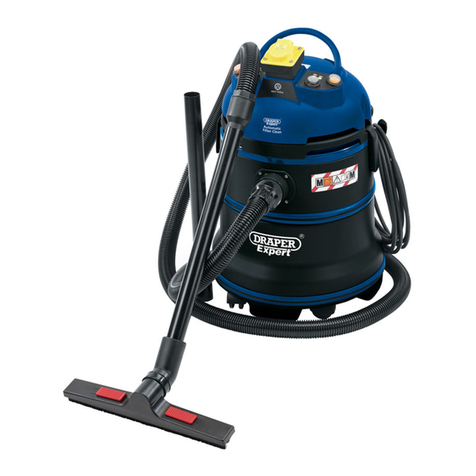
Draper
Draper WDV35LMC User manual

Draper
Draper 80947 User manual
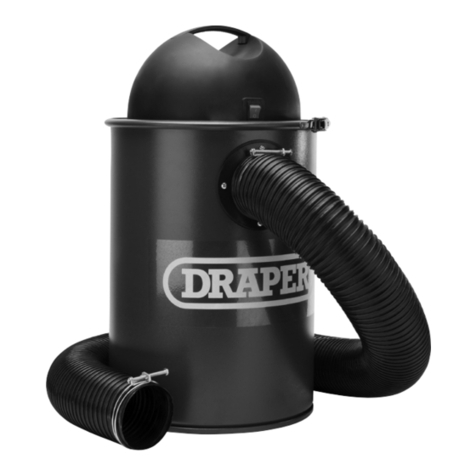
Draper
Draper DE1050B User manual

Draper
Draper WDV30SSP1 User manual
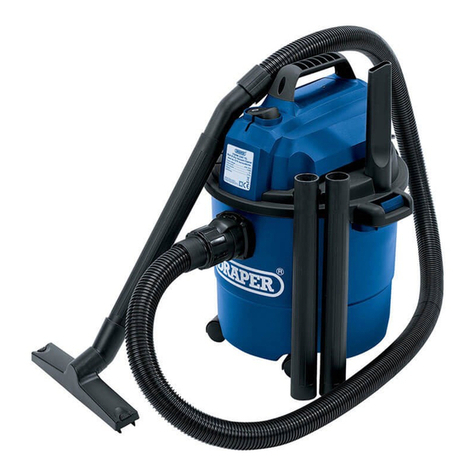
Draper
Draper WDV15A User manual

Draper
Draper WDV15A User manual

Draper
Draper 20529 User manual
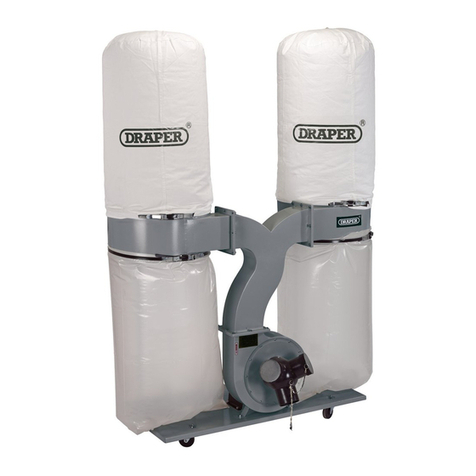
Draper
Draper 2200W User manual

Draper
Draper VC300 User manual

Draper
Draper CVC6 User manual
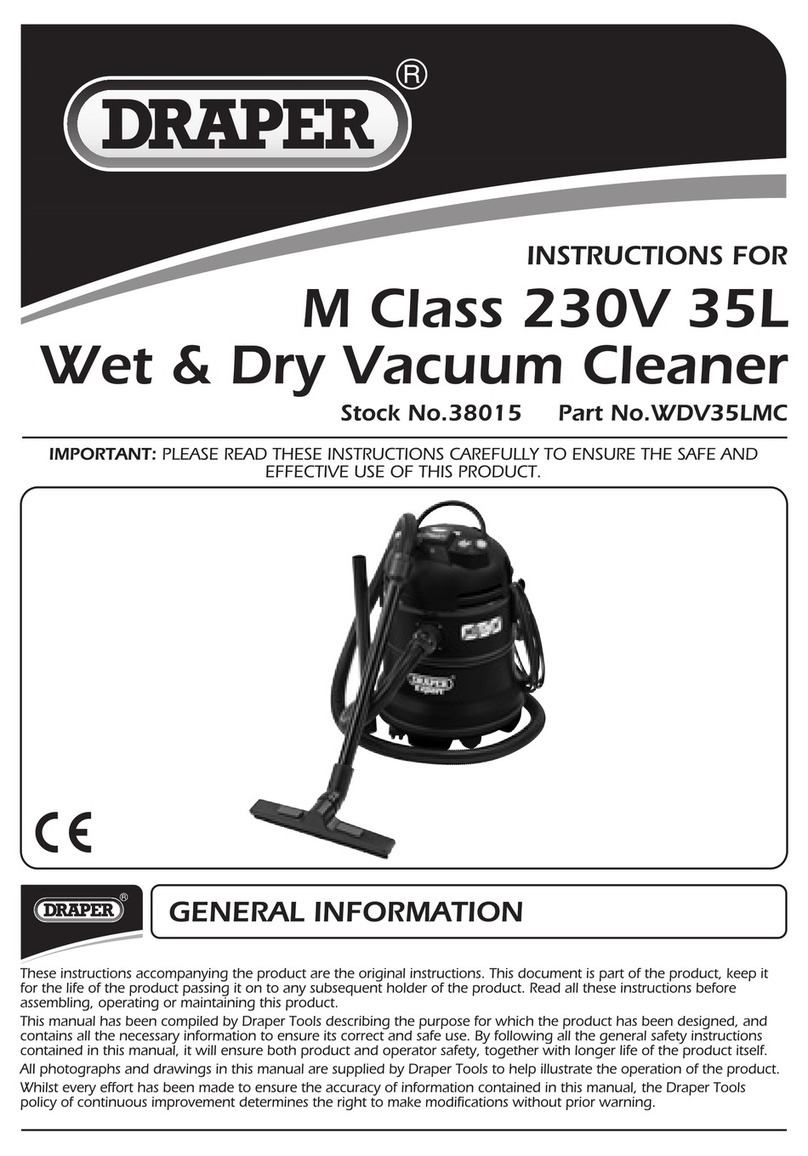
Draper
Draper WDV35LMC User manual
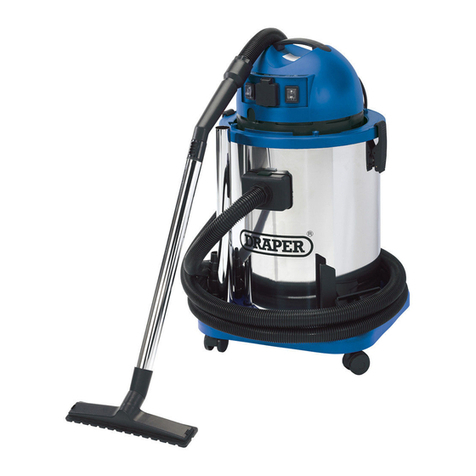
Draper
Draper WDV50SS/110 User manual
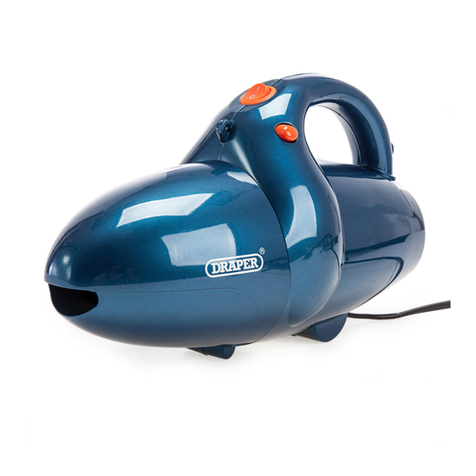
Draper
Draper VC600A User manual

Draper
Draper WDV24 User manual

Draper
Draper WDV10 User manual
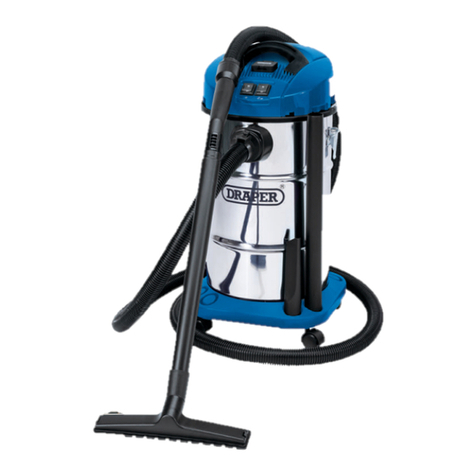
Draper
Draper WDV30SSP User manual
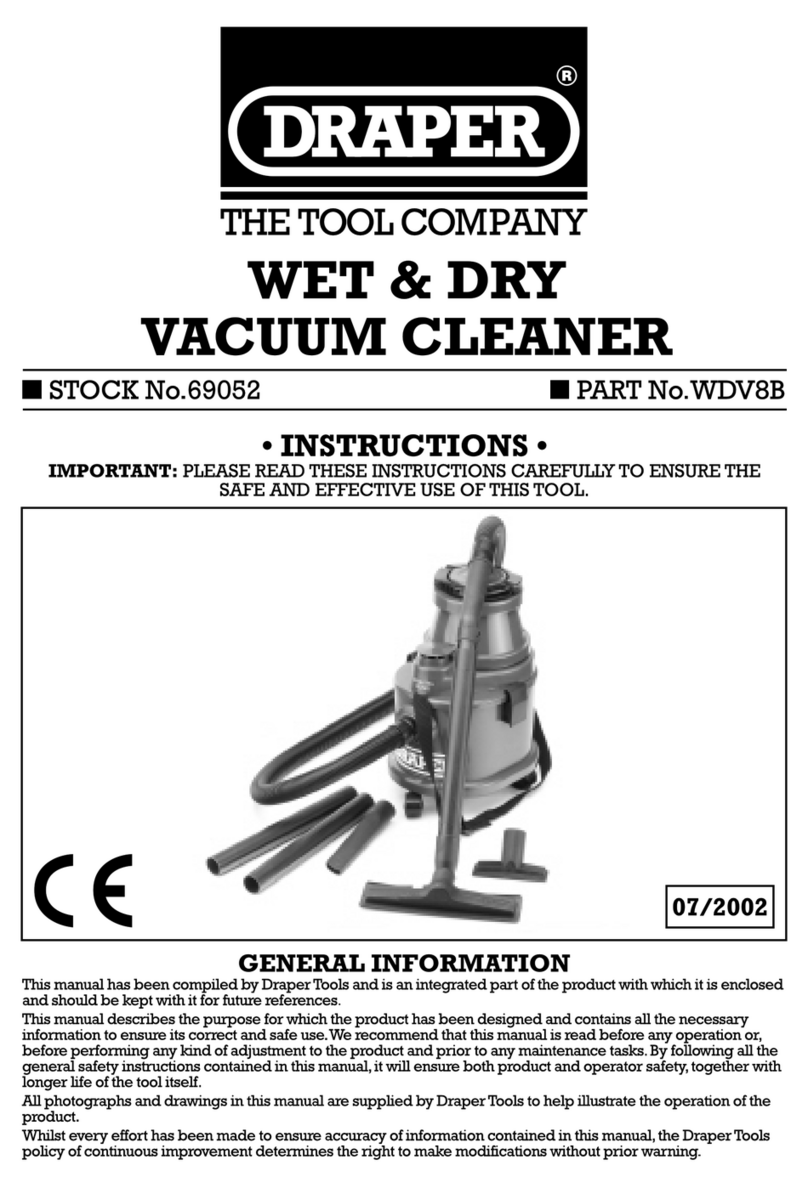
Draper
Draper WDV8B User manual

Draper
Draper 20514 User manual

Draper
Draper 80947 User manual

Draper
Draper DE1050 User manual
